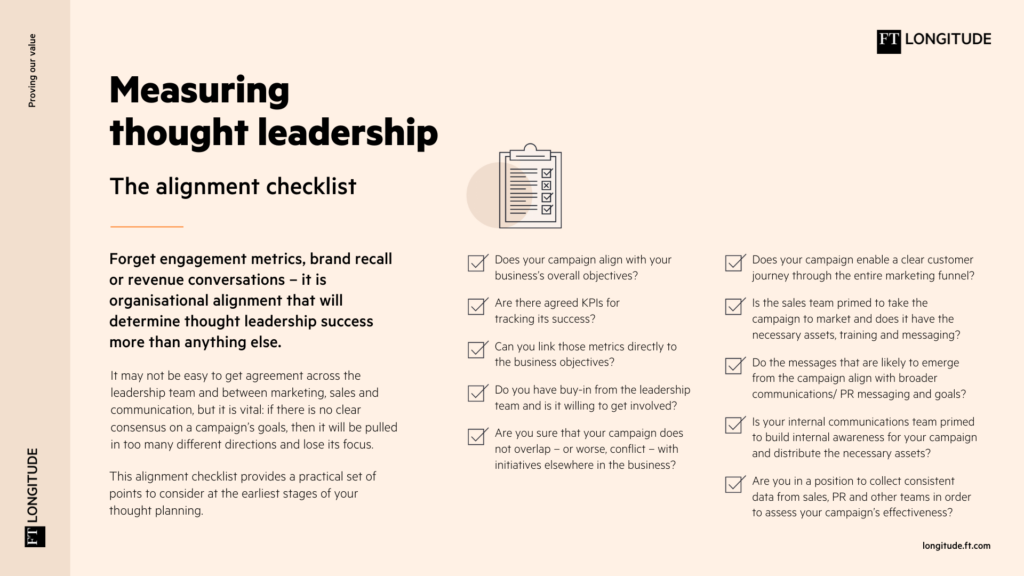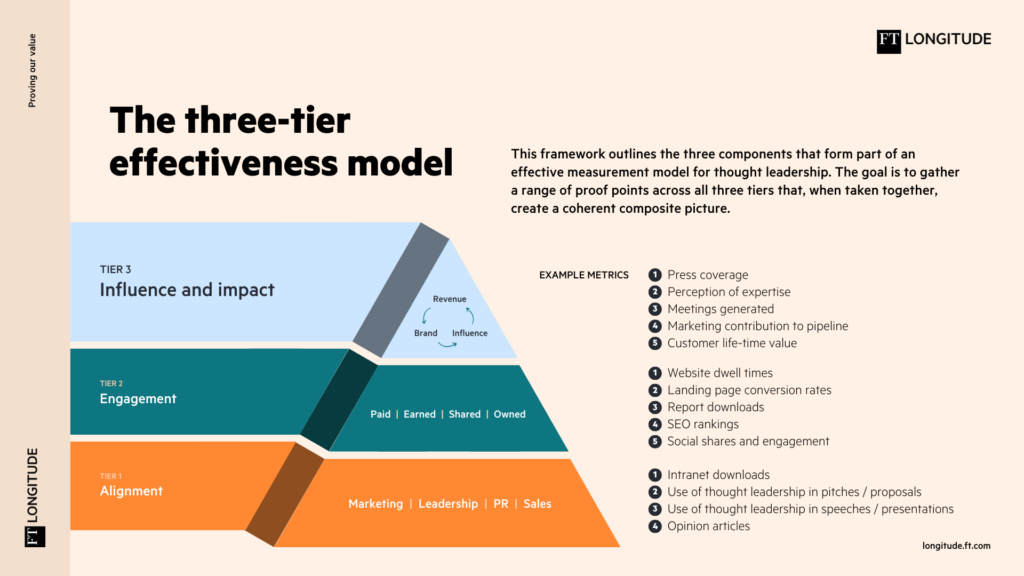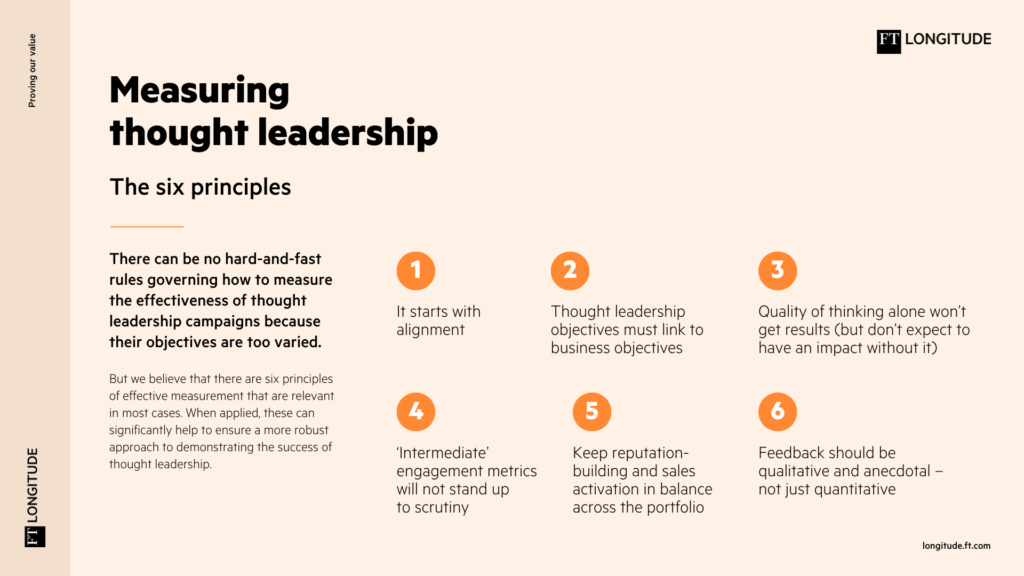The dos and don’ts of thought leadership measurement
Thought leadership can be notoriously tricky to measure. While marketers have become hooked on the short-term metrics derived from digital marketing activity, assessing the wider benefits of longer-term brand building marketing efforts, such as thought leadership, is still a major challenge and sticking point.
There is no quick and simple way to evaluate the impact of thought leadership, nor is there a one-size-fits-all approach, but that doesn’t mean companies should shy away from doing it altogether.
There are plenty of steps businesses of all sizes can take to more effectively gauge the impact of their thought leadership investments. Here is our handy ‘do and don’t’ guide for how, and how not, to measure your thought leadership activity:
DO ensure that your chosen metrics align with overall business objectives
Thought leadership initiatives are at their most effective when buy-in and support are secured across the business. The same rule applies to measurement. If you can achieve company-wide consensus on the objectives of your thought leadership, then agreement should also be sought on which KPIs you will track to ensure these goals are achieved. Think about what you are trying to accomplish with your thought leadership and ensure that the metrics you put in place can accurately track the outputs and outcomes of this activity.

DON’T work in a silo
Many thought leadership campaigns fail because not enough stakeholders are brought on-board. A lack of communication and clarity on the purpose of a campaign can lead to key stakeholders opting out or failing to see the benefits. It’s crucial that stakeholders across the business are consulted and involved from at the outset, and that lines of communication are kept open throughout – including sharing the results — so that everyone remains engaged and sees the value in what you are doing.
DO take a long-term approach
Patience is a virtue when it comes to thought leadership. One of its most common purposes is to strengthen a brand and build awareness, which can take a while to materialise. While this can be challenging, particularly when you are under pressure to deliver and demonstrate short-term gains, marketers who can convince stakeholders of thought leadership’s longer-term benefits and find a way of measuring the long game impact stand a better chance of witnessing success.
DON’T lose sight of your business objectives
The more closely aligned thought leadership is with your business objectives, the more likely it is that it will be valued and seen as a marketing imperative. Companies carry out thought leadership for a number of reasons – from changing a brand’s perception to achieving greater customer loyalty or breaking into new sectors. Whatever the goal, it is vital that businesses look at measuring effectiveness at both a campaign and portfolio level, and make sure that it is working in tandem with other tactics to take the brand in the right direction.
DO think qualitative, as well as quantitative
By focusing too heavily on ROI and quantitative vanity metrics, such as click-throughs, shares and bounce rates, many brands are failing to take into consideration the wider impact of content campaigns. Brands need to take a longer-term view and embrace the mixed metrics model which tracks how thought leadership activity is affecting, for example, brand perception and reputation over time.

DON’T neglect to collect anecdotal feedback
Measurement doesn’t need to be a purely analytical game, and nor should it. When you add context and narrative you gain much deeper insights that show what is driving the numbers. Striking a balance is key, so make sure you have the right levels of substance and storytelling to accurately portray how your content is being used and received by audiences.
And finally, DO follow our six principles of effective thought leadership measurement:
- Align your teams, both internal and external
- Ensure your thought leadership maps directly to your business objectives
- Demonstrate quality of thinking and don’t expect results without it
- Avoid placing too much emphasis on intermediate engagement metrics
- Keep reputation building and sales activation in balance
- Record qualitative and anecdotal feedback in addition to quantitative evidence

For further information and insights on this topic, download our Proving Our Value report below.






 Back
Back

 Book a meeting
Book a meeting
 Book a meeting
Book a meeting

